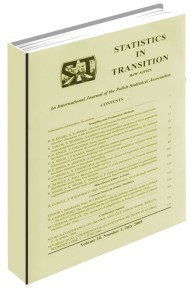SUBJECTIVE AND COMMUNITY WELL-BEING INTERACTION IN A MULTILEVEL SPATIAL MODELLING FRAMEWORK
SUBJECTIVE AND COMMUNITY WELL-BEING INTERACTION IN A MULTILEVEL SPATIAL MODELLING FRAMEWORK
Author(s): Włodzimierz Okrasa, Dominik RozkrutSubject(s): Business Economy / Management
Published by: Główny Urząd Statystyczny
Keywords: spatial analysis; measuring subjective well-being; community deprivation; social capital
Summary/Abstract: Analysing the cross-level interaction between individual and community well-being requires a joint involvement of both 'vertical' and 'horizontal' perspectives. While multilevel modelling separates the effects resulting from personal characteristics from those resulting from community features, the need to account for spatial variation and geographic membership proves that space and place matter, too. In this paper, the explicitly-spatial multilevel model has been developed to this effect, namely to identify both types of effects, space and place-related, using the hierarchical (nested) data structure for the smallest administrative units – NUTS5/LAU2, i.e. communes (gminas). In their analysis, the authors employed two methods for measuring well-being: (i) individual (subjective) well-being measure derived from the nation-wide Time Use Survey data, which they occasionally replaced with 'life satisfaction' type of self-reported measures, and (ii) multidimensional index of local deprivation composed of eleven domain-scales. The spatial multilevel modelling has been extended by an attempt to assess what effect spatial interaction has on cross-level relationships. Its inclusion in the discussion with which this paper concludes seems recommendable, as it indicates the need for more systematic efforts towards a spatially-integrated approach to this kind of modelling problems.
Journal: Statistics in Transition. New Series
- Issue Year: 20/2019
- Issue No: 4
- Page Range: 167-179
- Page Count: 13
- Language: English

